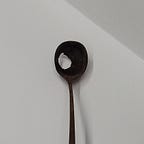What is the word that comes after the “cut-out”.
Abs, clavicle, pelvis, chest, back, et cetera.
The fashion world is spending 2022 as if they are determined to vomit their resentment about they were only looking for comfortable clothes under the pretext of an epidemic. It seems that bold dresses have decided to roll up their arms to enjoy the party culture and night that comes back with the end of the epidemic, for the moment of meeting real people rather than people’s SNS accounts. Unfortunately, unlike a party where various people gather together, these party looks are unified under a cut-out, so it is not easy to find diversity between boldness.
The cut-out has recently dominated the fashion industry. However, it never means that the designer’s clothes using the technique are no different from each other, like Uniqlo. Everyone wants to be a designer who creates trends, but the most critical thing as necessary as leading a trend is to read and accept the trend well. If everyone leads the trend first, can we call it a trend? Moreover, the cut-out is the most direct way to see the experimentation of a designer, and it is one of the designs where you can enjoy the joy of fashion design as it is. In other words, it can show variations even within the same trend.
The reason is that fabrics are stretched, unlike paper, and most are woven by crossing threads except for materials with non-woven properties (typically leather). In other words, the elongation possibility means the cut area changes the risk of sagging with the weight of the clothes. The fact that it is woven with thread implies that the line may come loose at the cross-section when cut, and there are many fabric restrictions. When designers attempt the more drastic and detailed cut-outs, more thorough calculations are required for designers.
Therefore, the designer’s experiments are different according to the senses and calculations of all designers who try to cut out, and the results are also different. But paradoxically, the diversity of fashion is disappearing due to the thorough calculations of designers. Because for a designer to perform complete calculations, the designer should decide the ‘specific’ body shape and size. If the body proportions change, parts that are different from the designer’s intentions may be exposed. If the body shape is different, the fabric stretches in the parts the designer did not intend, and the design is distorted.
In conclusion, breaking away from the existing ‘mainstream’ model is complex. Looking back at the 2022 SS fashion shows, plus-size models accounted for only 1.81% of the total cast. Of course, it is a statistically significant increase of more than four times compared to the previous FW, but it is also undeniable that it is still insufficient.
Of course, you can’t pass the blame to the cut-out. As mentioned earlier, the cut-out clothes brought us design pleasure as much as the joy of returning to our daily lives, so it is a suitable design to commemorate the day we are moving away from words such as closure and isolation. However, there is no other way to set them free from responsibility because the design cannot yet represent the various sizes of the human body.
Everyone is missing Y2K, perhaps because they turned the clock too much while returning to the pre-epidemic past. Exposing the body more is also part of this fragrance. Of course, there are the aesthetics for each era that fashion created, but sometimes we leave our artefacts in the past. If models that meet the ‘standard’ wear cut-outs repeatedly, and brands that people aspire announce cut-outs frequently, we will never be able to escape from the fashioned body. This trend only reinforces idolisation.
Again, it’s not the cut-out’s fault. If the body conceived by fashion design had more expandability in the first place, if we had considered more, the cut-out could also work in the right direction accordingly. From a designer’s point of view, there are not many techniques that can try regardless of fabrics and knits. Furthermore, it is rare that can bring out the coordination between clothes and the body, where clothes change every moment according to body movement. However, to borrow the words of Sinéad O’Dwyer, the problem with the cut-out is that it was designed based on a ‘small’ body and expanded later.
I think the problem with this trend,” she says, “is that the design is being created for a smaller body and then just being scaled up. (…) The model of operation has almost been to make the consumer customise their own bodies via dieting etc., rather than considering that all bodies are different. — Sinéad O’Dwyer
In fact, it’s more accurate to call it a fashion design issue rather than a cut-out issue. If fashion design had considered a more diverse body, if only ‘body’ had been considered rather than a fashioned body, the situation would have been different. Anyone could easily access the cut-out trend, and perhaps more people could realise the joy of fashion. But, as we all know, the reality is always different from the ideal, and assumptions in history are often useless. In conclusion, it is time to look at the current cut-out.
